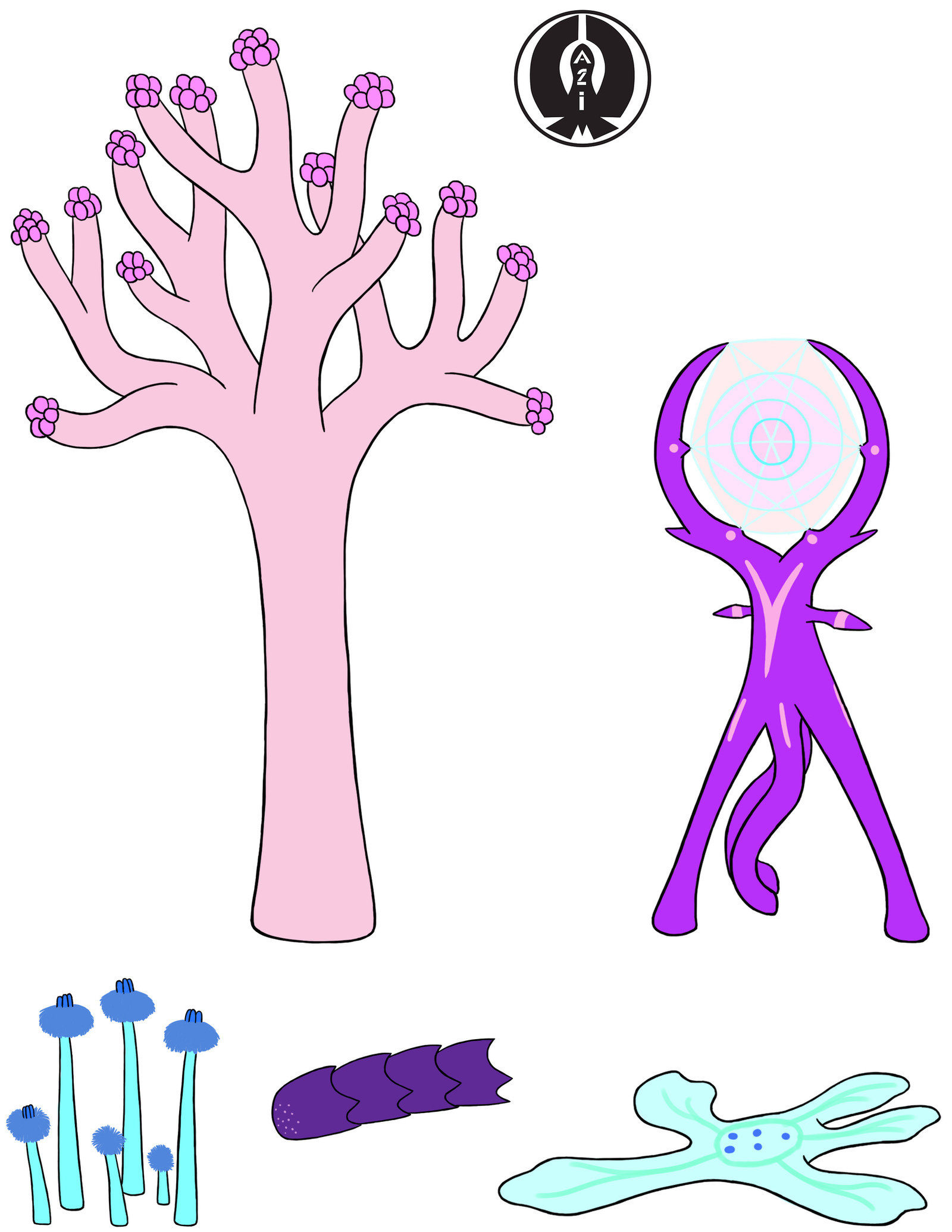HOME | DD
 Aliencon — New Silicon based life colored
Aliencon — New Silicon based life colored

#alien #aliens #alienlife #astrobiology #childrensbook #creaturedesign #digitalart #digitalcolor #digitalillustration #extraterrestrial #extraterrestrials #picturebook #silicon #extraterrestriallife #speculativebiology
Published: 2020-11-09 05:09:28 +0000 UTC; Views: 4970; Favourites: 55; Downloads: 0
Redirect to original
Description
I'm almost finished with coloring my next 2-page spread so I wanted to share what the organisms showcased in it look like colored as well as give some additional information about each of them.Sporecatcher (top right): The Sporecatcher's net is composed of tendon-like structures with sticky membranes in-between for catching nutrient rich spores which it then absorbs to be broken down and transported to one of the six mouthes that suspend the net. Darker sections of the net's membrane are sensitive to subtle changes in light thus act as a very primitive form of eye. Such a structure would normally be at risk of damage by any flying organism unfortunate enough to get caught in it. Fortunately for the Sporecatcher, flying organisms never evolved on its world given the incredibly slow movements of its lifeforms as a result of its extremely cold environment. Instead of regular bones, the Sporecatcher has a flexible internal structure akin to cartilage but stronger and has a prong on either side of its body for balance and reproduction.
Silicoral (top left): Despite their name and resembling trees, the Silicoral are more similar to fungi in that they feed on molecular compounds in the mud via root-like hyphae and the structures above ground are the fruiting bodies that release spores. Being suspended high up allows the Silicoral spores to spread out further so not to compete with each other.
Hydrolily (bottom left): Similar to Silicoral in being similar to fungi, Hydrolilies produces fruiting bodies in bundles that are lower to the ground. Though their spores don't travel as far as a result, Hydrolilies are a little risk of competing with each other as they require less space.
Shuffler (bottom middle): These arthropod-like organisms move through the mud filtering out spores that landed. They uses pheromones to attract others of their kind and linkup using porous adhesives on the front and back. When linked up, Shufflers less prone to predation due to being larger and the combined release of noxious gases they produce as a waste product. They can also exchange nutrients and genetic information in this state.
Starmold (bottom right): Resembling a mix between a starfish, slime mold, and an amoeba, Starmolds are amorphous predators that hunt anything they can catch up to, primarily single Shufflers. Once they've caught something, they use a combination of constriction and digestive enzymes to break into their prey. Lacking an internal skeleton, Starmolds can change their shape to fulfill various needs such as climbing, swimming, or burrowing.
As always comments and critiques are welcome.
Related content
Comments: 6

👍: 2 ⏩: 1

👍: 0 ⏩: 0

👍: 1 ⏩: 1

👍: 1 ⏩: 1

























